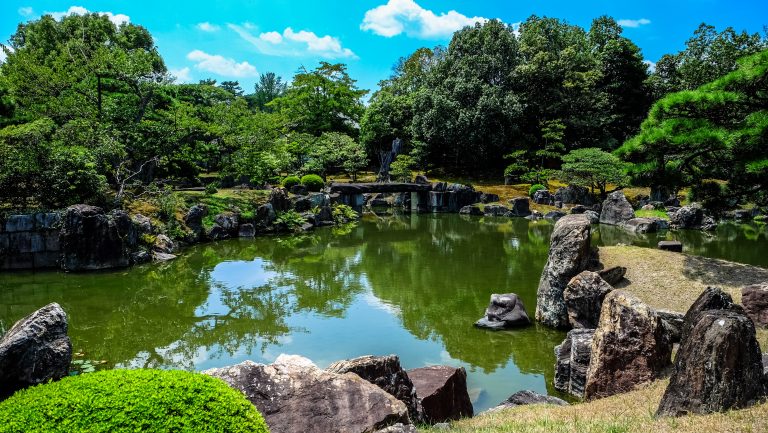The Importance Of Trail Conservation: Tips For Hikers And Outdoor Enthusiasts
Hiking is a popular and invigorating outdoor activity that has been enjoyed by many for decades. Unfortunately, its popularity also comes with a downside. Hikers and outdoor enthusiasts often take trails for granted and underestimate their importance. This attitude can lead to the destruction of natural environments, experience for future hikers, and even danger to wildlife. The significance and value of trail conservation can never be overstated. This article will look at the reasons why trail conservation is important, tips for hiking responsibly and trail maintenance that promotes the conservation of trails.
Why Trail Conservation is Important:
It is crucial to understand the importance of trail conservation as it is for the well-being of the environment, humans, and wildlife. Several things can happen when trails and trailheads are not properly maintained, and hikers are not responsible;
– Trails that are routinely damaged will eventually become unusable as the trails erode or become covered by debris making it hazardous for hikers, animals and can change the direction of the trail.
– Hiking in prohibited areas, camping on undesignated areas can cause the local ecosystem to suffer as it interferes with the natural food chain of wildlife and vegetation.
– Improper disposal of trash, pollution from cooking and leaving behind plastics can lead to serious problems. Animals consume plastics, and food remnants that attract wildlife attract bears, coyotes, or raccoons, increasing conflicts between hikers and wildlife.
– The destruction of vegetation can be prevented by avoiding shortcuts to complete trails more quickly, destroying the plants or disturbing natural habitats. Invasive plants can accidentally be transferred from one part of the trail to another, which helps the invasive plants to spread.
Tips for Hiking Responsibly:
Hiking responsibly is the first step in trail conservation. Following these tips makes sure that our trails, wildlife, and plant species are preserved for future generations:
– Pick up all trash: This is one of the easiest things hikers can do to help clean up the trails. If hikers pack it in, they should pack it back out.
– Avoid feeding wildlife: Feeding wildlife attracts them to areas that they don’t usually inhabit, causing disruption to the local ecosystem. It also causes them to expect food from humans on their next visit, which is not safe for the animals nor the hiker.
– Stay on designated trails: It is important to stay on designated trails because wildlife habitats can be destroyed with excessive foot traffic, visitors entering prohibited areas and it also helps prevent soil erosion and protects vulnerable plant species.
– Avoid damaging plants, trees, and other natural elements: Hikers must be mindful of the nature surrounding them. They should avoid anything causing damage to the natural environment by staying on the trail, respecting boundaries and signs.
– Respect the environment and other hikers on the trail. Hiking the trail has a social aspect too. Always be mindful of other hikers and avoid creating a disturbance. Hiking solo tends to be quieter, and it is possible to experience the peacefulness and tranquillity of the trail without a negative impact.
Tips for Trail Maintenance:
Trail maintenance is a significant part of trail conservation. Following these practices helps preserve the natural environment:
– Volunteer with local organizations: Most local communities have groups responsible for the maintenance of the trails. If interested in practicing good trail conservation and hiking habits, get involved with the local organizations and look for opportunities to volunteer.
– Report any issues on the trail immediately: Reports of damage from hikers can save valuable time, resources and prevent further destruction from happening. If equipment is broken, or signs are missing, make sure to report that to the groups responsible for the maintenance of the trail.
– Follow leave no trace principles: These principles have become the go-to for responsible trail conservation. They emphasize practices such as proper disposal of trash, minimizing fire impacts, respecting wildlife and even indoor etiquette.
– Leave natural elements where you found them: This point emphasizes that all natural elements found on the trail should be left exactly where they were found. Collecting souvenirs like rocks, flower bunches or branches means harm to the natural environment. Those items may be home to wildlife and even insects.
– Don’t build or modify trails without permission from trail managers: Trail Managers are in charge of maintaining trail systems. If anyone plans to make changes to the trail, they must seek permission to avoid compromising the natural environment, animal habitats, or the trails used by other hikers.
Conclusion:
Hiking is both exhilarating and calming at the same time. To ensure that the tranquillity and enchanting beauty of nature in hiking trails last for generations to come, it is important to practice responsible hiking and follow proper trail maintenance practices. Whether it is packing in & out, respecting wildlife, staying on designated trails, avoiding damage to the natural environment, and many others, every action counts towards ensuring that our hikes are sustainable, healthy, enjoyable and safe.
FAQs
1. What is trail conservation?
Trail conservation is practices taken to preserve trails, ecosystems and local wildlife habitats, and wildlife, in order for future generations to enjoy these natural environments. These practices include trail maintenance, responsible hiking, re-vegetation, and trailhead management.
2. What are some tips for hiking responsibly?
Hikers must take responsibility for maintaining the trails they hike, ensuring that our trails, wildlife, and plant species are preserved for future generations. Some tips include staying on designated trails, avoiding leaving litter, and avoiding damaging plants and trees.
3. Why is trail conservation important?
It preserves the natural environment, protects wildlife, promotes sustainable hiking, and ensures that trails remain usable for future generations. Trail conservation plays a critical role in promoting responsible outdoor recreation and environmental stewardship.
4. What is leave no trace?
Leave no trace is a set of principles that guide hikers to practice responsible trail conservation. The principles emphasize practices like minimizing fire impacts, disposing of waste properly, being mindful of others and their belongings, and respecting wildlife.






